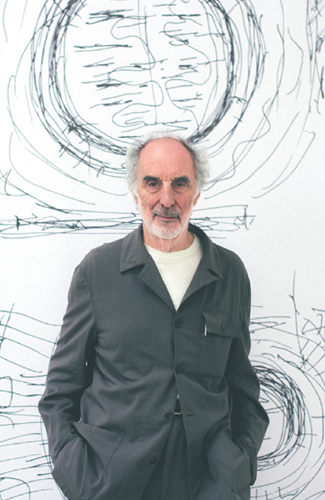Building a legacy
By Philippe Dova ( China Daily ) Updated: 2017-10-21 07:53:54
 |
|
Born in Bordeaux, France, Parisian architect Paul Andreu has a great desire to do things with his hands and with his head, and to always keep discovering something new. Photo by Trudy He |
Parisian architect Paul Andreu has designed so many iconic buildings in China that it's easy to lose count. Among his best known are the National Grand Theatre in Beijing, the Shanghai Oriental Art Center, the Jinan Grand Theatre and Shanghai Pudong International Airport. Approaching the age of 80, Andreu continues to develop projects in China, including a revolutionary undertaking to bring new life to an impoverished village in rural Shandong. The globally renowned architect, writer and (most recently) painter held his first art exhibition, Dialogue avec le Papier, this summer at Beijing's Yishu 8, where Philippe Dova sat down with him for this exclusive interview
How was it that you went from architecture to writing - and more recently to painting?
I have a desire to create, for continuous renewal. While I can't say that I know everything there is to know about architecture, I no longer have much to prove or discover. For me, painting is just as important, creatively, but it's something you do alone in your workshop, with a piece of paper and a pot of ink or acrylic paint - it's terribly refreshing.
Why did you wait so many years to start painting?
It was a kind of need. I felt saturated and I partially compensated for this by writing. But writing is a very long process - it takes at least a year to write a book. Painting is faster. Being alone with yourself during the day, in the light, and then putting yourself in a situation where you produce something of which you know nothing and for which no one has asked - it's a kind of freedom you rarely have in life.
Are you still as busy as ever in China?
China is still building, but at a less frenetic pace. They have trained their own architects, who for the most part are very good, so there's no longer a need for foreign architects to contribute. Today, China is part of a great movement of very open exchanges with other countries - and that's a very good thing. After the National Grand Theatre in Beijing, I did a series of projects in different cities: a sports complex in Guangzhou, the Shanghai Oriental Art Center, a performing arts complex in Jinan, a museum in Taiyuan, office buildings and so on. I'm not involved in quite so many projects now, but I still love coming here.
What are your projects in China right now?
With the Beijing Institute of Architectural Design, I've submitted a project to design a new area in the city of Nantong. There's a cultural component - performing arts facilities, an art museum, et cetera - as well as convention and exhibition centers and a hotel.
There's a project in the Zhuhai-Macao area that's especially close to my heart - a cultural-commercial urban development project on Hengqin Island. The Chinese engineering and construction company Zhuhai Da Heng Qin approached French architect Thomas Coldefy and asked him to think about the project, recommending that he work with an architect who's already known in China. He asked me if I'd be willing to do some of the work. I very seldom collaborate with French architects, but if this project goes ahead, then it will have both our signatures on it. We're now in the preliminary phase and we'll present the project some time before December; the planned completion date is in 2019.
|
|
|
|
|
|
|
|

























 Raymond Zhou:
Raymond Zhou: Pauline D Loh:
Pauline D Loh: Hot Pot
Hot Pot Eco China
Eco China China Dream
China Dream China Face
China Face






